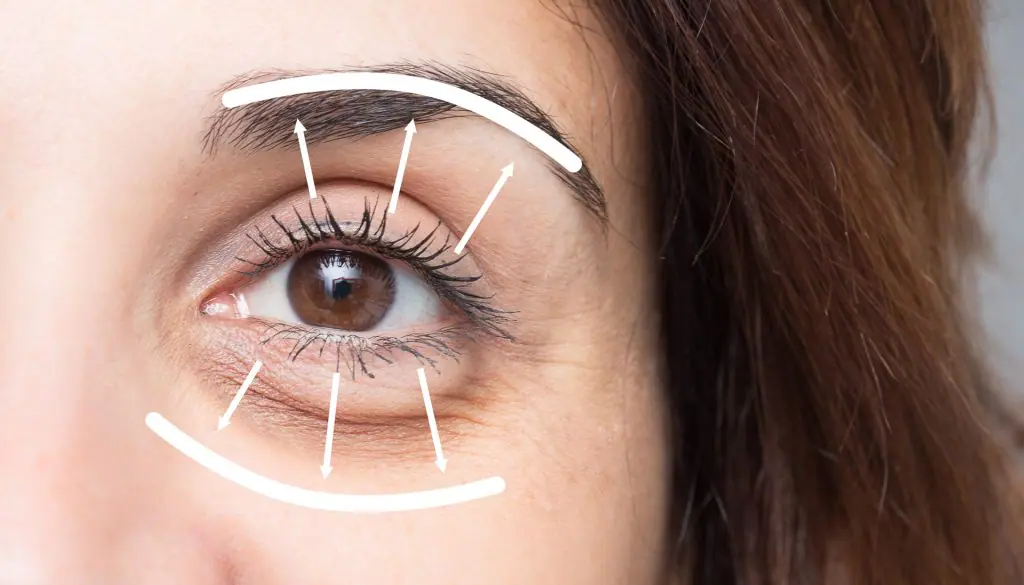Who is a good candidate for blepharoplasty (eyelid surgery)?
Eyelid Surgery (Blepharoplasty) is a surgical procedure designed to correct drooping or sagging eyelids. Typically, eyelid drooping becomes more prominent in adults due to excessive tissue accumulation, loss of skin support, and reduced collagen production.
Fine lines and wrinkles often conceal the sagging skin’s surface. This condition can potentially impair vision, especially when the upper eyelid hangs over the eye. Eyelid surgery is an innovative cosmetic procedure for those seeking to reduce the appearance of eyelid sagging and minimize the presence of under-eye bags.
Age is not a determining factor in considering whether you are a good candidate for this procedure. Our evaluation primarily focuses on the condition of your skin before accepting you for this method. However, most Blepharoplasty candidates are usually over 35 years old, as this is often when partial eyelid drooping becomes noticeable.
Did you know that this surgery serves a practical purpose as well? Some individuals have such severe eyelid drooping that it slightly impairs their vision. In these cases, surgery can significantly improve their daily life. When considering Eyelid Surgery or Blepharoplasty, consult with our experts for a personalized assessment of your needs.
Upper Blepharoplasty
During upper blepharoplasty, your surgeon creates incisions (cuts) in the natural creases of your upper eyelids. These incisions are hidden when your eyes are open. Your surgeon removes excess skin and protruding fat, then closes the incisions.
Lower Blepharoplasty
During lower blepharoplasty, your surgeon creates an incision just below the lower lash line. They remove excess skin from your lower eyelid through this incision. They may also use a hidden incision inside your lower eyelid (transconjunctival incision) to address lower eyelid issues and redistribute or remove excess fat.
How should I prepare for eyelid surgery?
In preparation for Eyelid Surgery (Blepharoplasty) and many other cosmetic surgery procedures, several steps must be taken. First and foremost, you should schedule a consultation with a plastic surgeon or an online healthcare provider like AVAMEDI. During this consultation, your medical history, concerns, and expectations will be taken into account when recommending a specific treatment plan, which may or may not include Blepharoplasty.
An eye examination may also be conducted to determine whether excess skin in any way affects your vision.
Once your surgery plan is finalized, there are pre-operative instructions that you must follow for the best results. These instructions are personalized, so not all preparations for Blepharoplasty are the same.
In most cases, you should quit smoking and refrain from taking blood-thinning medications such as warfarin, aspirin, ibuprofen, and the like. You should arrange for a caregiver to take you home and spend at least the first 24 hours with you. Since the downtime from work will be relatively short depending on your unique surgical plan, you should take a break from work and daily activities, so make arrangements for childcare or household help if necessary.
General pre-operative instructions for Eyelid Surgery include getting enough rest and maintaining a nutritious diet leading up to the procedure. The better your body is prepared for this process, the more comfortable and speedy your recovery will be.
Prepare for Recovery Get your home ready to support your treatment. Every patient has their specific routines and resources, so think about what you need to do to create a patient-friendly environment. Some considerations include:
- Complete household cleaning before your surgery
- Invite family and friends to help with childcare and pet care
- Prepare and freeze meals for easy and quick access post-operation
- Stock fresh fruits and vegetables, as a healthy diet can aid in your recovery
- Have a table near places where you expect to spend most of your recovery time, such as your bed or a reclining chair, for medications, water bottles, snacks, and other necessities.
Are there possible complications with blepharoplasty (eyelid surgery)?
While these potential complications are infrequent, it is crucial to be aware of the risks before considering Eyelid Surgery or Blepharoplasty. Most patients, however, are satisfied with their results following the procedure.
- Bleeding: Some individuals may experience bleeding during or after the procedure.
- Infection: Infections are a potential risk, although they are infrequent.
- Dry Eyes: Temporary dryness of the eyes may occur as part of the healing process.
- Abnormal Discoloration: Aesthetic complications such as abnormal eyelid discoloration can arise but are unusual.
- Scarring: Although rare, scarring may occur following the surgery.
- Temporary Vision Issues: It is possible to experience temporary double vision or blurriness following the Eyelid Surgery procedure. Typically, these effects subside within a few days after the surgery.
- Difficulty Closing the Eyes: Some patients may face challenges in fully closing their eyes, particularly during sleep. While this issue is rare, it can become permanent in exceptional cases.
- Swelling and Asymmetry: Temporary swelling and minor eyelid asymmetry may occur during the recovery or healing process.
- Acne Formation: After the removal of sutures, small whiteheads may appear. These can be addressed by a skilled surgeon using a fine needle.
- Ectropion (Lower Eyelid Drooping): Ectropion is an extremely rare complication involving the downward sagging of the lower eyelids. Correction may require additional surgical procedures.
Despite the infrequency of these complications, it’s crucial to be informed about potential risks before deciding to undergo Eyelid Surgery or Blepharoplasty. It’s worth noting that most individuals are satisfied with their outcomes following the procedure.













